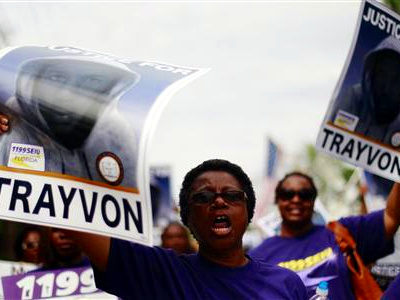
Racial unity concept art ©melita/stock.adobe.com
In the myth of Sisyphus, Hades punishes the king of Corinth for cheating death. Sisyphus must push a boulder up a hill, watch it roll down, then repeat the process for eternity. The story has become a staple metaphor for a doomed, repetitive cycle. Healing racial division in America can seem Sisyphean. Dr. George Yancey, in Beyond Racial Division: A Unifying Alternative to Colorblindness and Antiracism, identifies the cycle of racial division in America:
“Have you noticed our unhealthy cycle of racial controversy in the United States? It goes like this: We have a racial incident, such as a police shooting of an African American, and then we have a series of protests demanding justice. After a while there are counterprotests and pushback from those who consider the demands of the protesters to be unreasonable. Finally we return to some kind of normalcy and wait for the next racial incident to start the cycle all over again.”
We in the United States continue to wrestle with racial division in a way that feels doomed.
So, how do we move forward and break the vicious cycle of racial hostility?
Beyond Racial Division proposes a new path
Dr. George Yancey cuts through the division with a new vision: mutual accountability. Drawing from empirical data using his expertise as a sociologist, he empathetically and rigorously challenges the two most popular responses to racial division: colorblindness and antiracism. Both fail for different reasons.
But Dr. Yancey doesn’t leave us there. He provides an alternative.
For many, especially for people of color, racism is painful, traumatic, and difficult to talk about, in addition to controversial. As an African American man who has experienced the ugliness of racism firsthand, Dr. Yancey writes with grace, humility, empathy, and care. He genuinely wants change, even if that change will take patience.
He makes clear conclusions while remaining open and personable in a way that surpasses other books on this subject.
The problem with colorblindness and antiracism
Colorblindness overlooks real, lingering racial problems that pervade America.
For example, in the past few years, sociologists have run studies on racial bias in the job market. The studies send fake resumes with equal qualifications to the same job application. They distinguish them with Anglo-sounding names and African-sounding names. Anglo-sounding names are much more likely to get an interview. Numerous rigorous studies reveal the same uncomfortable truth: Racial bias—often subconscious—exists in America. Black and white Americans are not afforded the same opportunities.
On the other hand, antiracism does not allow white people a say in the conversation. It shuts down helpful conversations and forces the issue without consent. Antiracism does not allow for enough nuance. In addition, recent studies show that the $8 billion industry of diversity, equity, and inclusion (DEI) training often makes race relations worse, not better.
At Denison Forum, we concur. Difficulties with colorblindness and antiracism exist. We’ve discussed the pitfalls of Critical Race Theory while acknowledging the tragic, continued prevalence of implicit racism in America.
So, how should we march forward, aware that bias and institutional racism exist and, at the same time, that elevating people of color over and against white people doesn’t usually lead to positive outcomes for anyone?
The third way: Mutual accountability
Dr. Yancey argues theologically and sociologically in a way that doesn’t oversimplify racial division. It considers the concerns, questions, and evidence from all angles because mutual accountability allows everyone to sit at the table.
Mutual accountability demands humility from us all and to be careful about which battles to pick, but ultimately no question is off the table. Mutual accountability challenges people of color to be careful when playing the “race card,” and, at the same time, challenges white people to seriously self-reflect, open to the implicit racism they may unknowingly carry.
Instead of mandatory diversity, equity, and inclusion training, mutual accountability calls for voluntary conversations where people share the same goal. Research shows that the best way to cut through bias is to spend time with people in that group while finding common ground and unified under one goal (for example, greater diversity or solving racial division).
It’s not as simple or naive as “Everyone just get along and be friends!” Mutual accountability means discussing political and institutional solutions. Dr. Yancey’s way is unique because it recognizes racism and wants everyone to sit at the table to work through the issues.
Until we can talk honestly about racism from a place of humility, love, and empathy, we will continue to run in place.
Unsure where to start? Read Beyond Racial Division. Then, as Dr. Yancey recommends, talk to someone about race issues whom you disagree with, preferably someone of a different ethnicity.
Select quotes
“People of color pay the price for the historical racism we have experienced in the United States. Residential segregation is only one example of the impact of historical racism; there are other ways people of color pay the price. For instance, a well-demonstrated wealth gap is also tied to historical disadvantages.”
“The concept of racial alienation does not mean we bear equal responsibility in the creation of the conditions that led to this alienation. Historical racism has created our racial hierarchy, and the social structures that come out of that racism continue to affect people of color negatively. But how do we move beyond these effects to find lasting racial solutions for our society? In the past many of those solutions have come about through activism and protest. But I am skeptical of the efficacy of that route today.”
“A purely colorblind approach that completely ignores race was a very progressive racial position for much of our country’s history. However, the racial abuse that accumulated over the centuries makes such an attitude untenable for many people of color.”
“I want to hear from those with a colorblind perspective. They may be able to show me realities I normally do not see from my social position as an African American man.”
“1. Define the racial problem. 2. Identify what we have in common. 3. Recognize our cultural or racial differences. 4. Create solutions that answer the concerns of the racial outgroup. 5. Find a compromise solution that works best for all.”
“Efforts to force others to accept our ideas will create resentment and make it harder to establish unity. Rather than trying to make sure our group wins everything it can get, we must seek common ground and do our best for all to win.”
“I have criticized both colorblindness and antiracism for lacking empirical support. Neither approach comports with an accurate assessment of social reality. Both bring certain presuppositions into the discussion of how we deal with racial alienation, and those presuppositions are not empirically supported.”
“The overt simplicity of these models makes it easy for us to command others to follow us. Just ignore race! Just do antiracism! These appeals sound good until we truly dive into how depravity can turn such commands into new forms of mistreatment.”
Related articles
“Does silence equal complicity with racism?” By Jerry Wagner
“What does the Bible say about racism?” By Dr. Jim Denison













